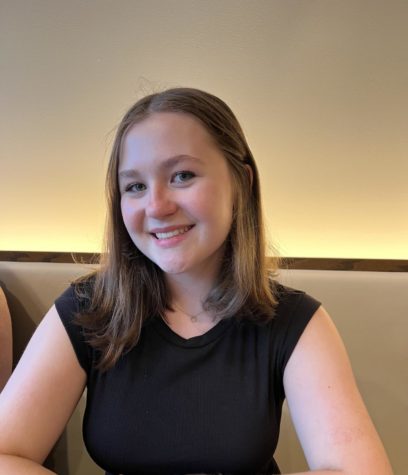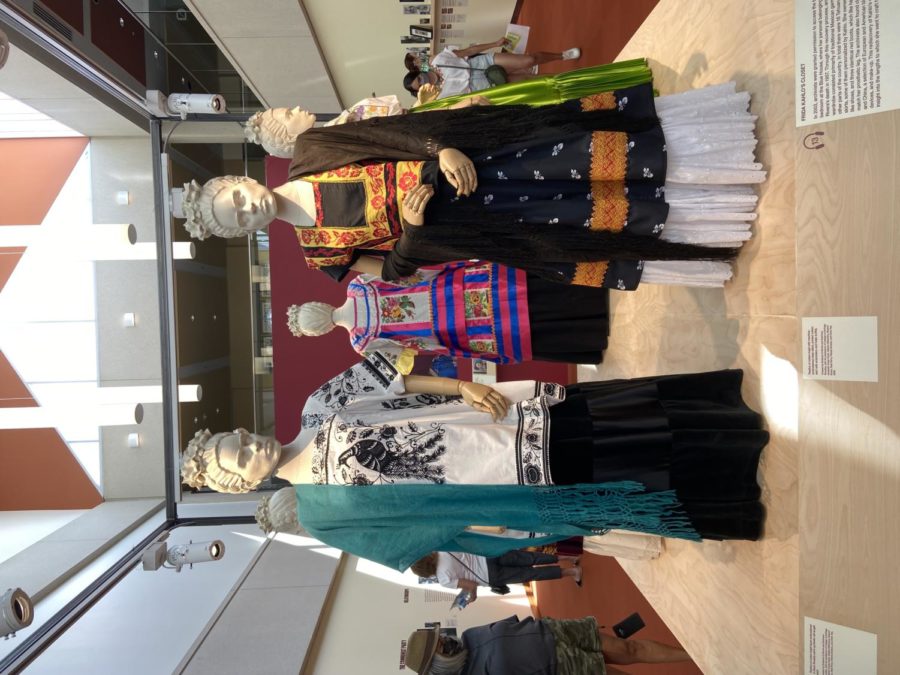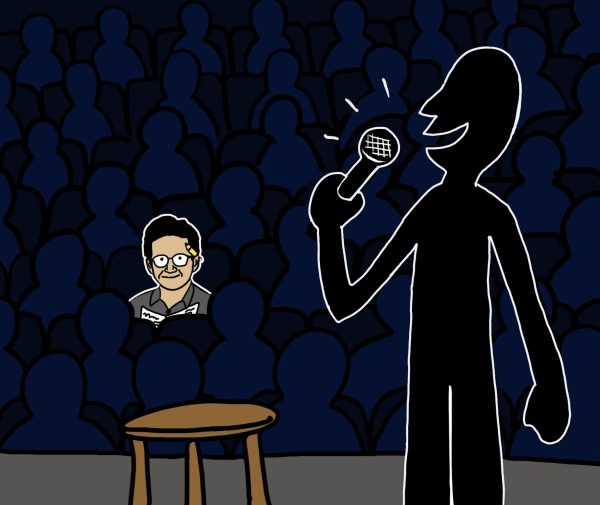CCMA’s timeless exhibit celebrates artist Frida Kahlo
The Cleve Carney Museum of Art’s Frida Kahlo Timeless Exhibit opens with a towering portrait of the artist herself, hair and skirt adorned with pink and white flowers, rested in front of a vibrant green background. From the beginning, we were excited to get to know more about the famous artist, the woman behind the unibrow. We were not alone in our excitement. The first room, the Historical Exhibition, was packed with people revolving around the photographs, quotes, and detailed explanations posted on the walls. We appreciate the depth the museum went into surrounding her past and were able to relate these experiences to the art featured in the gallery itself.
One of the famous pieces featured in The Gallery was The Broken Column. Like many of her works, The Broken Column is a self-portrait – here we see a tear-streaked Kahlo, barely covered with a medical corset and cloth around her waist. In most other self-portraits, Frida painted herself wearing Tehuana dresses. These garments concealed the wounds she suffered from as a result of polio when she was 6 years old and a bus accident at age 18. According to historians, the dresses symbolized mexicanidad, or ¨Mexicanness”, the acceptance of new ideology and a liberal lifestyle as a Mexican. However, in this piece, she exposes her wounds to the audience: down the center of her body, skin splits away to reveal a fracturing white pillar that ends just below her chin. Kahlo’s solemn expression, the sharp details of skin, pins, and shattering cement – all these components illustrate someone who was struggling with years of physical and emotional pain. We found it illuminating to see the different ways Frida viewed herself; as ‘broken’, like this piece is titled, as a child (My Nurse and I) or simply as an artist (The Bus). Like the woman herself, the art displayed in this exhibit was beautiful and multi-dimensional.
Without Hope (1945) furthers her medical journey. The painting displays Frida lying in her bed, mouth overflowing with animal skulls and corpses. The cornucopia of carnage appears to be held up by an art easel. From the museum’s descriptions, we knew Frida was bedridden for much of her life. She had to undergo over 30 medical operations relating to her bus accident that resulted in a fractured pelvis, collarbone, ribs, and more injuries that would ail Kahlo her entire life. This painting is a depiction of her own experience being force-fed pureed food in recovery.
“Her candid handling of very difficult and personal subject matter is what made her unique,” ETHS art teacher Daria McMeans explains. Here raw and graphic images show that she drew from her pain to create thoughtful art pieces, like this one.
Along with her physical pain, Kahlo drew from her experience as a woman to create daring pieces for the time period. The piece Henry Ford Hospital (1932) captures Frida on a bed, clutching her abdomen. Blood pools around her legs. Red strings, rather like umbilical cords, float upward to and attach to six objects: A male fetus, symbolic of the baby she and her husband wished to have, an orchid, thought to be a gift from her husband, a snail, representing the slowness of her abortion, a metal contraption, and two depictions of a pelvic area, a cast and a bone. Like Without Hope, her artwork feels real and disturbing. Because of her disability, her ability to have children was compromised. During this time period, not many women were taken seriously for their deeply emotional art pieces. In addition, abortion had been made illegal a year previously, in 1931. It wasn’t until 1991 did that law change. Not only did it take courage to paint about such a personal topic, but Kahlo´s choice to share her art with the public when its content was considered taboo was particularly gutsy. It is Frida´s bravery and artistic skill that makes her stand out from other artists, and become the image of strength she is today.
One of our favorite pieces from the exhibit was The Chick. The painting has themes of fragility and loss, both of which Kahlo experienced. A small white bird sits in front of a bouquet of flowers, covered in webs and insects. The white chick represents Kahlo, and the webs, sticks and bugs represent the many obstacles standing in her way of happiness. According to some interpretations, caterpillars and spiders are metaphors for death. The Chick was painted at the time of her deteriorating health, strained marriage, and the loss of her father. The symbolism represented in this painting shows how Kahlo used her own heartbreak to create this masterpiece, something you could feel through the oil paint.
The themes of Frida’s artwork, all impactful and intriguing, ranged from sexuality to betrayal (A Few Small Nips) to simple portraiture (Nude of Ady Weber) and beyond. Along with enjoying the beautiful art, visitors can gain a better understanding of the person behind it. We hope this exhibit comes back to Chicago, so others can learn about the life and art of this truly inspiring woman, artist, and icon.
Your donation will support the student journalists of the Evanstonian. We are planning a big trip to the Journalism Educators Association conference in Philadelphia in November 2023, and any support will go towards making that trip a reality. Contributions will appear as a charge from SNOSite. Donations are NOT tax-deductible.














